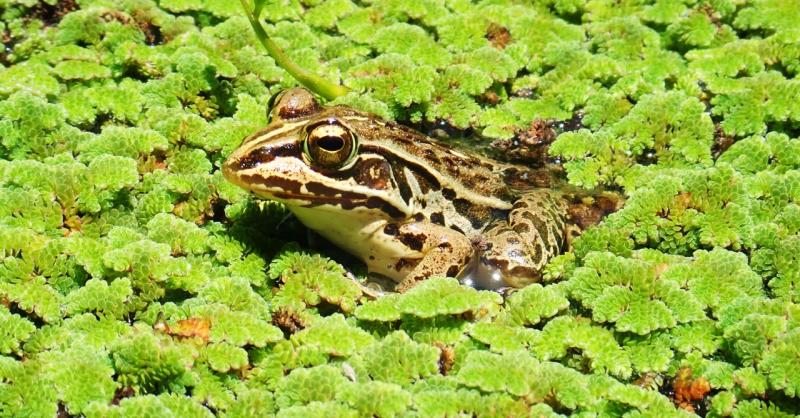Frog Eats Beetle. Beetle Crawls Through Guts to Escape
By: Matt Simon (Wired)


Easy come, easy go. I guess sometimes you just have to wade through the crap.

The nice thing about being a frog is that you don't have to chew your food—just gulp, and down the hatch. The problematic thing about being a frog is that you don't have to chew your food, which means that if you've happened to nab the aquatic beetle Regimbartia attenuata, your food might come out the other end in an undesirable fashion: alive and literally kicking.
Writing today in the journal Current Biology, Kobe University ecologist Shinji Sugiura describes how the beetle, locked behind the frog's jaws, turns around and scrambles through its digestive tract. In carefully designed lab experiments, Sugiura found that 93 percent of the beetles he fed to the frog Pelophylax nigromaculatus escaped the predator's "vent"—aka anus—within four hours, "frequently entangled in fecal pellets," he writes. The quickest run from mouth to anus was just six minutes. The beetles then went about their day as if they hadn't just spelunked through a digestive system, and even swam effectively.
Apparently understanding their unique predicament, the R. attenuata beetles seem to have clambered through the intestines of the frogs. Sugiura showed as much by immobilizing some of the beetles' legs with wax—this time, none of them emerged from the anus alive, but as feces, over 24 hours later. This all came as some surprise to Sugiura himself. Given that the predator and prey share habitat in Japan's rice paddy fields, he hypothesized that the beetle could have evolved some sort of anti-frog defense. "However, I did not predict that R. attenuata can escape from the frog vent," Sugiura writes in an email to WIRED. "I simply provided the beetle to the frogs, expecting that the frogs spat them out in response to the beetles' behavior or something."
Serendipitously, it may be that the adaptations the beetle had already evolved for the life aquatic prepared it for the great journey through a frog's digestive system. For one, these insects swim quite effectively by kicking their legs, so perhaps they're in effect swimming through the waste in the frog's intestines. Also, insects breathe through holes in their hard shells, or exoskeletons. So to breathe underwater, this particular species of beetle traps a small pocket of air under its wing covers, which are known as elytra. (Think of the polka-dotted flaps that a ladybug opens to take off.)
Perhaps it does the same while finding its way through a frog's innards. "I would imagine that an air bubble would help the beetle breathe, and may provide a little jacket to keep stomach acid at bay while an escape is made," says Christopher Grinter, collections manager of entomology at the California Academy of Sciences, who wasn't involved in the research.
But how does the beetle get the frog to, uh, open up the hatch? "Further experiments are needed to investigate how to stimulate the frogs to defecate," says Sugiura. "However, I speculate that R. attenuata use legs and the body to stimulate the frog's hind gut." What that might feel like for the frog is anyone's guess.
Yet things could be much worse for the predator: The larvae of the beetle genus Epomis are rather more active in humiliating frogs. When a frog approaches one of these larvae, the "prey" sinks its hooked jaws into the tongue of "predator," releasing enzymes that melt its flesh. The larvae locks itself there, lapping up the amphibian's liquidized nutrients. After a few days, the frog is so weakened, it can no longer move. Finally, "what we see is that it sort of tears tissues from the amphibian's body," entomologist Gil Wizen told WIRED a few years back. "After a few hours the amphibian is reduced to just a pile of bones and just a little bit of skin."
Really, frogs can't help but eat—sometimes the beetle adventures through its digestive system and emerges alive, and sometimes the beetle consumes the frog alive. "Frogs are voracious predators, forming an irreplaceable role in food webs and most ecosystems," says amphibian biologist Jodi Rowley of the Australian Museum, who wasn't involved in the research. "It would be interesting to see if the frogs avoided eating these beetles in the wild, or if they continue to consume them, with the occasional beetle that fails to pull off their escape making it all worthwhile."
Decisions, decisions.






Don't try this at home.
Very cool article! I love stuff like this.